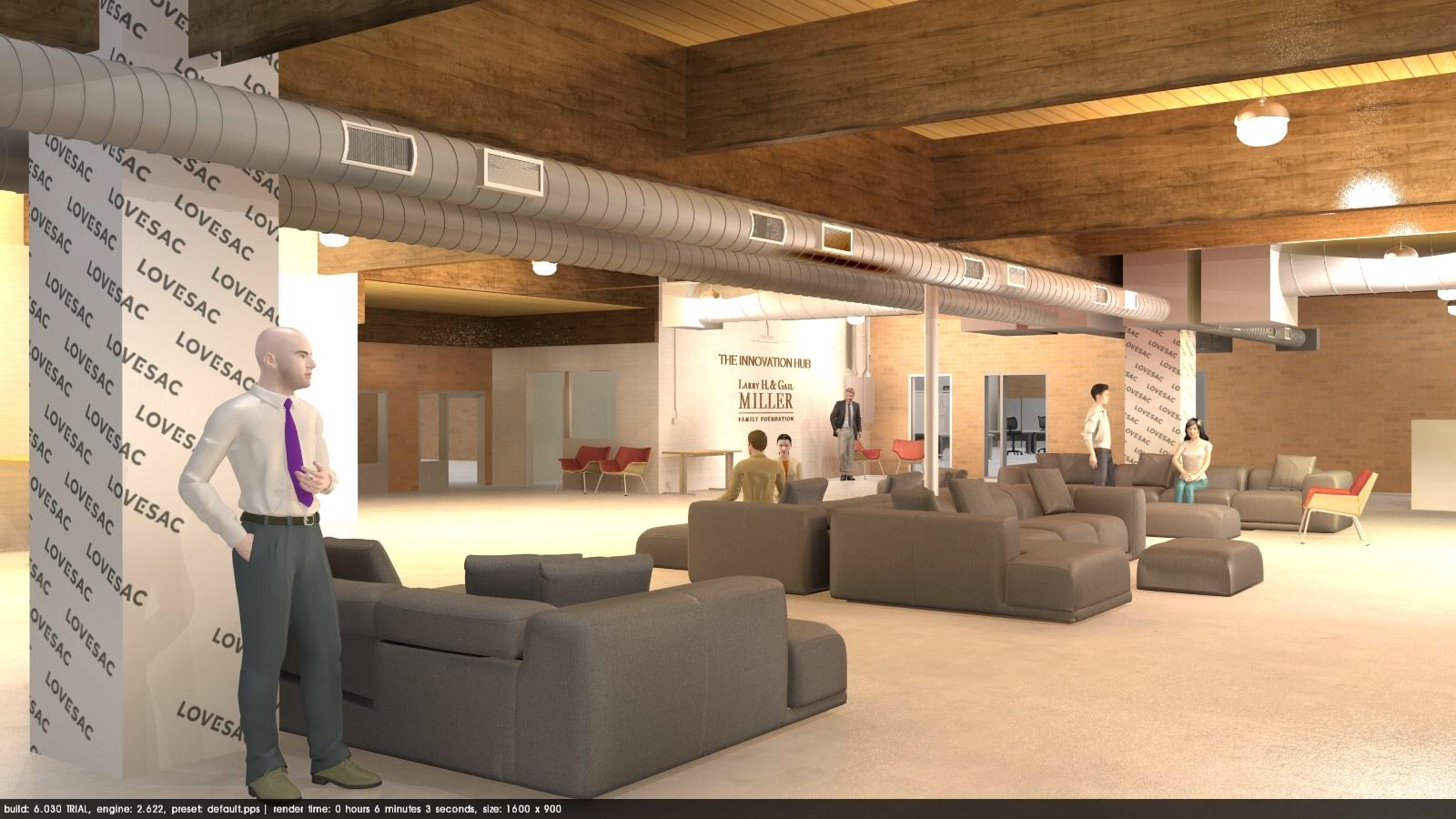The Dixie State University Atwood Innovation Plaza building has undergone major renovations to modernize and transition into an entrepreneurship building.
The new projects include the Miller Hub, Lovesac Lounge, Zions Bank Business Resource Center, and additions to the recently built Makerspace: a wood and metal shop and a biochemical lab called the Soft Cell.
The construction was completed and the building regained occupancy on Aug. 16. Students are allowed in the building, though there is not much use for the renovated areas yet. The hub and lounge still need to be furnished, the machines for the wood and metal shop are in boxes, the building security is yet to be set up, and the fire-rated doors need to be installed in the additional makings of the Makerspace areas before access is allowed.
Facilities Project Manager Katie Gomm said although these items need to be completed before the ribbon cutting, the construction is not the reason for the ribbon cutting event being so far out from the completion of the building. The ribbon cutting could take place by the end of the month when renovations should be finished, Gomm said; however, the date was set for Nov. 8 to coincide with another event happening the same day, the Southern Utah Code Camp, Gomm said.
It’s important to have ribbon cutting’s around the same time as other big events happening because then there are already other people from different communities in town to get involved in the event.
“I think one of the coolest things about this [project] is how much we’ve done with so little money,” said Don Willie, executive director of TIE center. “We built this with $1.2 million; the original bid we got to build this was $6 million.”
Gomm said the planning committee decided not to follow the exact floor plan that was created because it was too expensive. They decided to keep the majority of the original walls instead of completely gutting the building and replacing everything.
The 1.2 million isn’t an exact amount of what the cost in renovations will be for the entire building because there are still future plans for remodeling the gymnasium and a few of the bathrooms.
New projects
The Lovesac Lounge will consist of lovesacs, booths, tables and chairs, and a self-serve cafe that will have water, coffee and soda free to anyone using the space.
“I think one of the coolest things about this [project] is how much we’ve done with so little money,”
Don Willie, executive director of TIE center
The intent is for the area to be a comfortable and free flowing space where people can collaborate with each other, Willie said.
The Miller Hub includes small work rooms, a conference room and a multipurpose room.
The Zion Bank Business Resource Center is where the offices of faculty and staff who are involved in business and innovation are located.
Additional Makerspace areas
The wood and metal shop is a place for students to go if they’re looking to start their own business because there are many resources in helping with building the parts needed, said Zack Manweiler, TIE center makerspace equipment coordinator.
“[These spaces go along with the Makerspace because] it’s everything that comes after the 3D printing,” Manweiler said. “It’s where people can physically build their ideas.”
The monthly rate for community members, faculty and staff is $50, and is free to students, Willie said. However, if anyone starts manufacturing in the space, the price increases to $100 per month.
The Soft Cell was built as a larger lab than what is located in the Snow Math and Science Center, Willie said. The lab gives the biology department the growth they need for researching and manufacturing.
Ryan Hobbs, director of digital and extended learning, said these plans have been in progress for a year. They wanted to create an academic business space that also collaborates with the community. Hobbs said it is a way for the university and the community to promote both business and academic innovation.
“My number one priority was modernizing the business services,” Willie said. “I asked myself, ‘how do we support these businesses and how do we teach them principles that are going to help them grow and thrive moving forward in today’s economy,’ and I think we’ve done that.”



